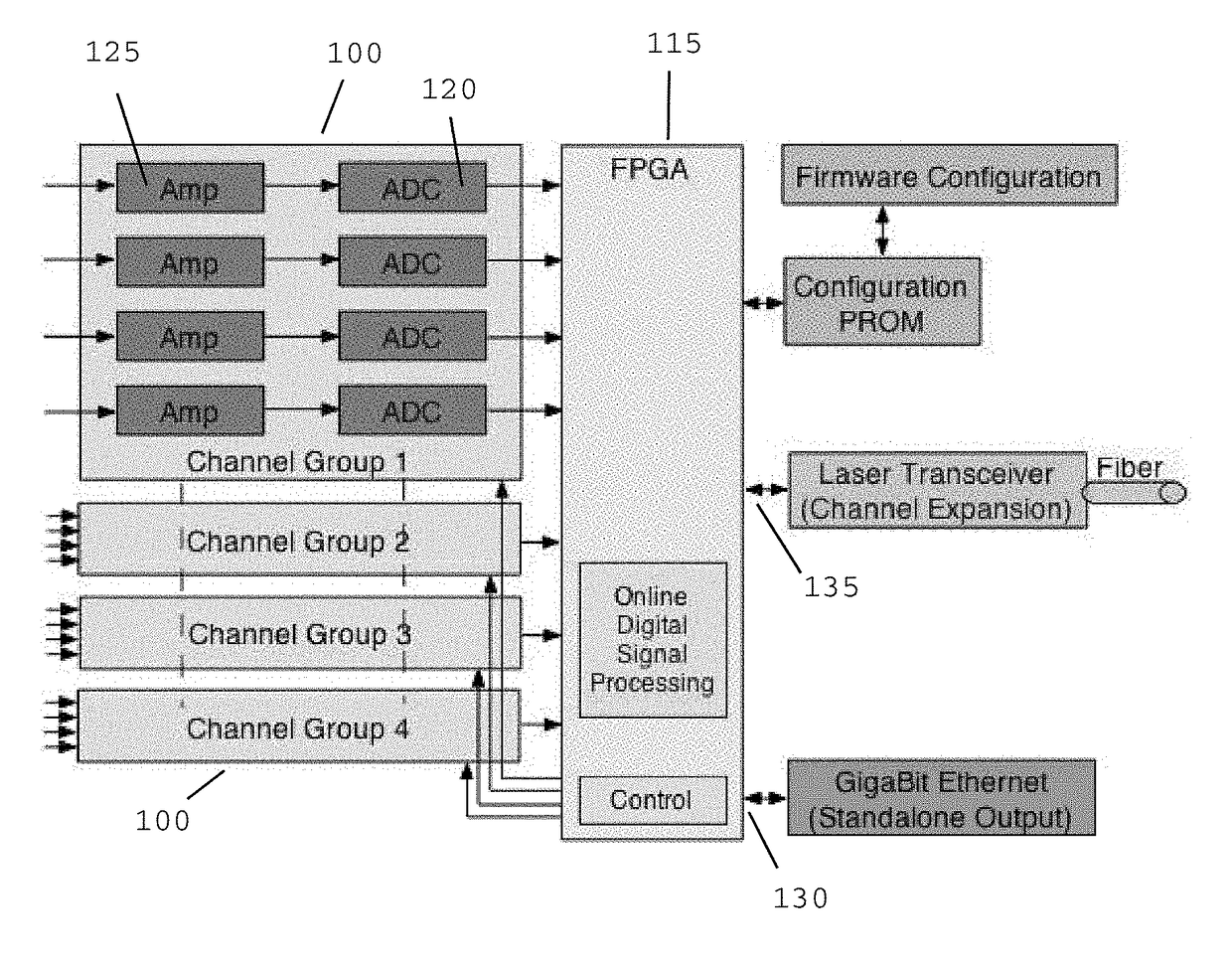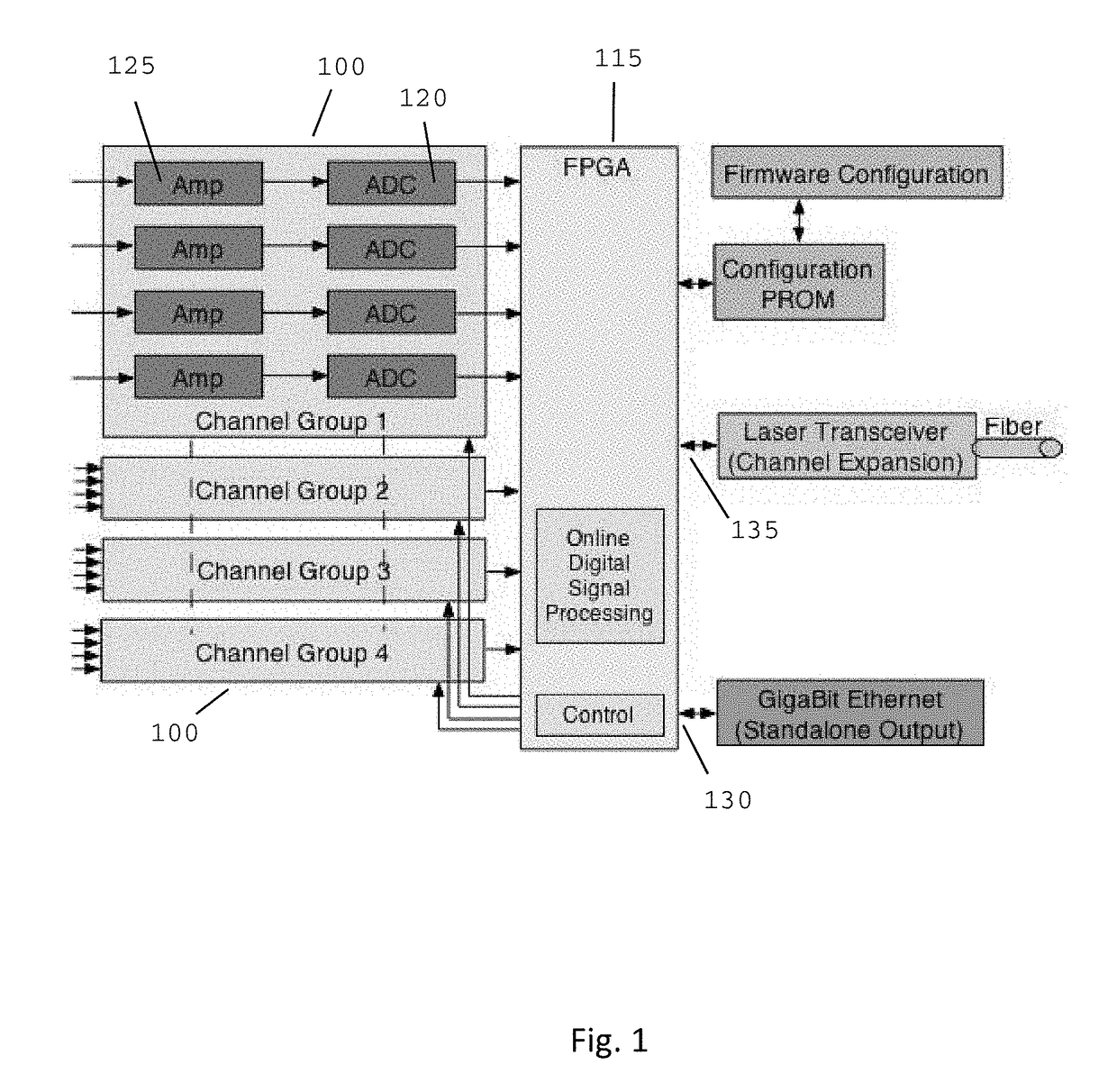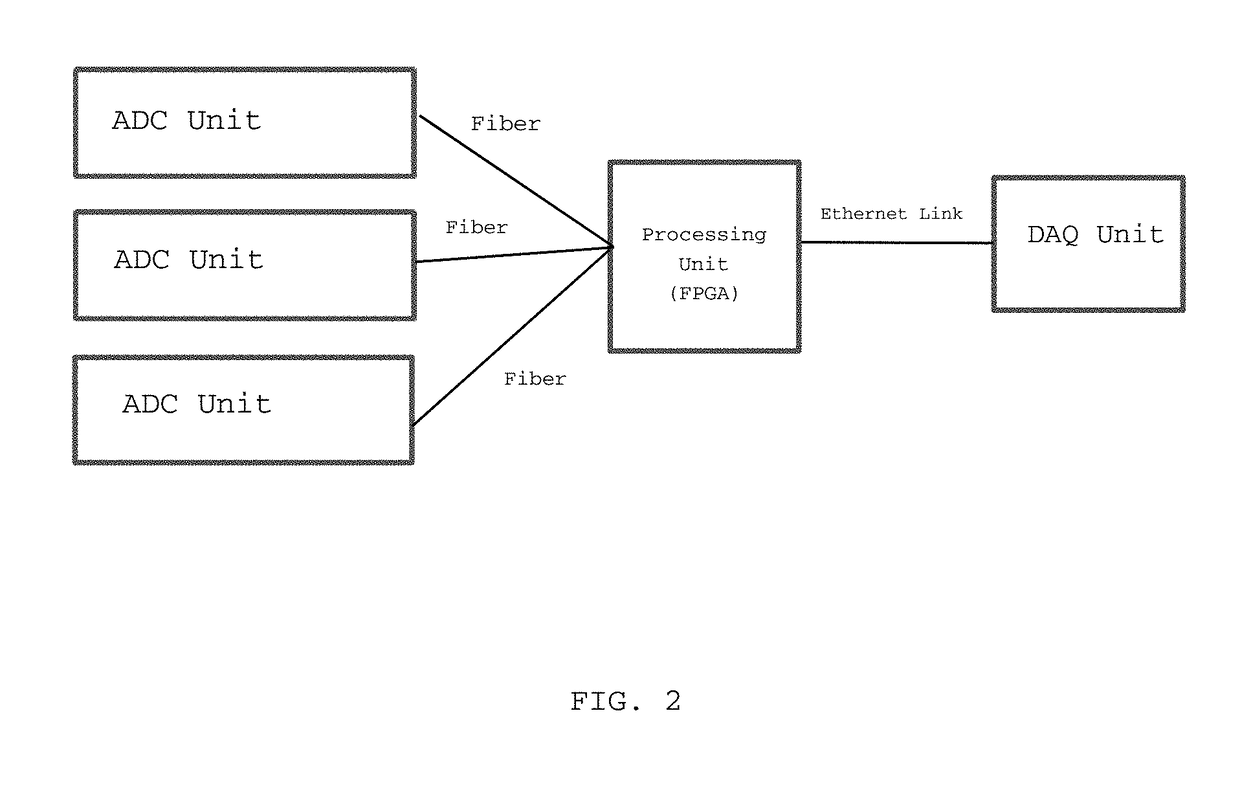Method and apparatus to digitize pulse shapes from radiation detectors
a radiation detector and pulse shape technology, applied in the field of electromagnetic radiation detectors, can solve the problems of imposing a large data transmission and storage requirement, unable to handle one data acquisition channel only the conversion of a single continuous stream of analog pulses, and the latter method loses its practicality, etc., to achieve high gain and rate, high speed, and easy expansion of the system
- Summary
- Abstract
- Description
- Claims
- Application Information
AI Technical Summary
Benefits of technology
Problems solved by technology
Method used
Image
Examples
Embodiment Construction
[0017]The present invention discloses a device and method for digitizing pulse shapes from signals emanating from electromagnetic radiation detectors. This apparatus and method permits high speed pulse-shape digitalization allowing position resolution imaging of particles having a range of energies.
[0018]In the most basic embodiment, the invention can be divided into three portions: one or more ADC units 100, a FPGA unit 115, and a processing device. Referring now to FIG. 1, the interconnected elements in this embodiment are as follows: a field programmable gate array (FPGA), flash analog-to-digital converter (ADC) electronics capable of digitizing multiple channels, a data acquisition computer (CPU), software algorithms defining the electrical processing accomplished by the FPGA, and, software algorithms defining the serial communication between the FPGA and the data acquisition portion.
[0019]Each ADC unit 100 consists of one or more channels with each channel having ADC electronic...
PUM
 Login to View More
Login to View More Abstract
Description
Claims
Application Information
 Login to View More
Login to View More - R&D
- Intellectual Property
- Life Sciences
- Materials
- Tech Scout
- Unparalleled Data Quality
- Higher Quality Content
- 60% Fewer Hallucinations
Browse by: Latest US Patents, China's latest patents, Technical Efficacy Thesaurus, Application Domain, Technology Topic, Popular Technical Reports.
© 2025 PatSnap. All rights reserved.Legal|Privacy policy|Modern Slavery Act Transparency Statement|Sitemap|About US| Contact US: help@patsnap.com



